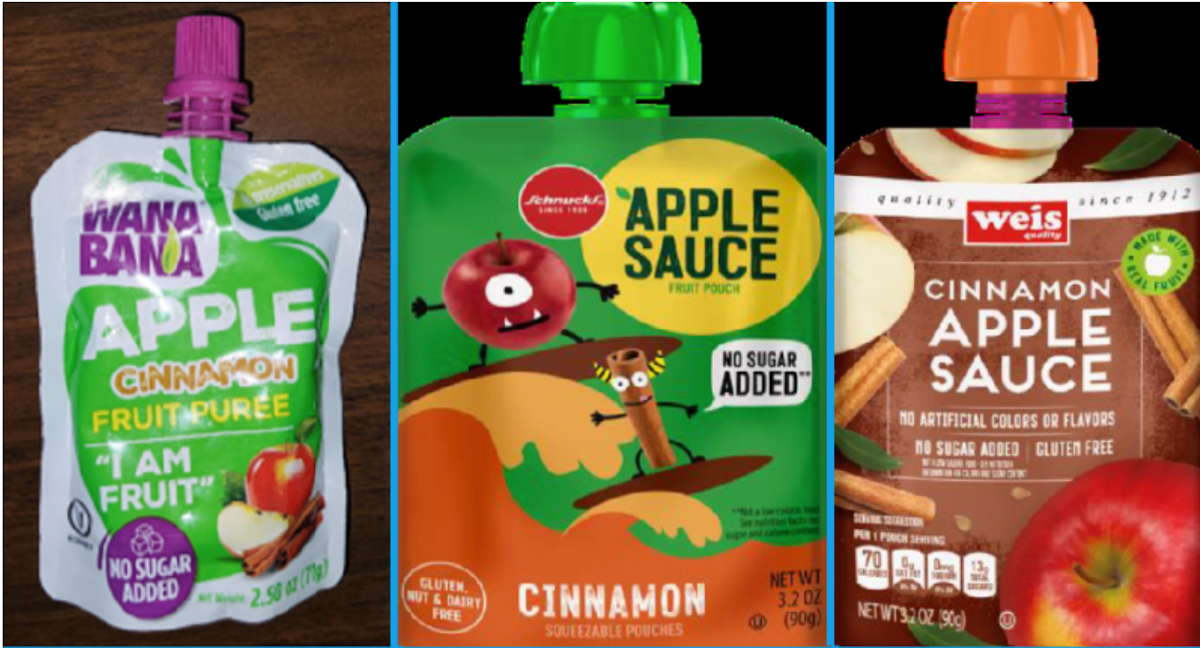
Federal officials are reporting that the patient count in an outbreak of lead poisoning traced to imported cinnamon applesauce stands at more than 200, with all of those affected being six years old or younger.
The Food and Drug Administration and the Centers for Disease Control and Prevention keep separate lists of those affected by the applesauce, which has been found to have five thousand times the amount recommended for safe consumption.
The implicated applesauce was made in Ecuador and sold in pouches in the United States under the brands Wanabana, Schnucks, and Weis. The Wanabana brand was sold in stores nationwide and online. The Schnucks and Weis brands were sold in those regional grocery store chains. The Schnucks brand pouches were sold individually and in variety packs.
As of Dec. 19, the CDC’s investigation has identified 67 confirmed cases, 122 probable cases, and 16 suspected cases for 205 cases from 33 states.
The FDA’s investigative team has received 69 complaints.
“The CDC and FDA have different data sources, so the counts reported by each agency will not directly correspond. In addition, some people who were affected by the contaminated product might be reflected in both the numbers reported by the FDA and the numbers reported by CDC, so the numbers should not be added together,” according to the Tuesday update.
All implicated cinnamon applesauce, sold in pouches designed for children, has been recalled.
The FDA’s deputy commissioner for its Human Foods Program, Jim Jones, has said that he believes the cinnamon used in the applesauce was intentionally contaminated with lead. Lead can increase the weight of foods.
The applesauce was made at an Austrofoods facility in Ecuador using cinnamon from Negasmart. Both U.S. authorities and investigators from the Ecuadoran government have said the problem with the applesauce came from contaminated cinnamon.
About lead poisoning
Parents and caretakers should consult a healthcare provider if they suspect a child may have been exposed to lead.
Short-term exposure to lead could result in the following symptoms: headache, abdominal pain/colic, vomiting, and anemia.
Longer-term exposure could result in additional symptoms: irritability, lethargy, fatigue, muscle aches or muscle prickling/burning, constipation, difficulty concentrating/muscular weakness, tremors, and weight loss.
Permanent consequences can lead to developmental delays and brain damage.
(To sign up for a free subscription to Food Safety News,click here)
Note: This article have been indexed to our site. We do not claim legitimacy, ownership or copyright of any of the content above. To see the article at original source Click Here













